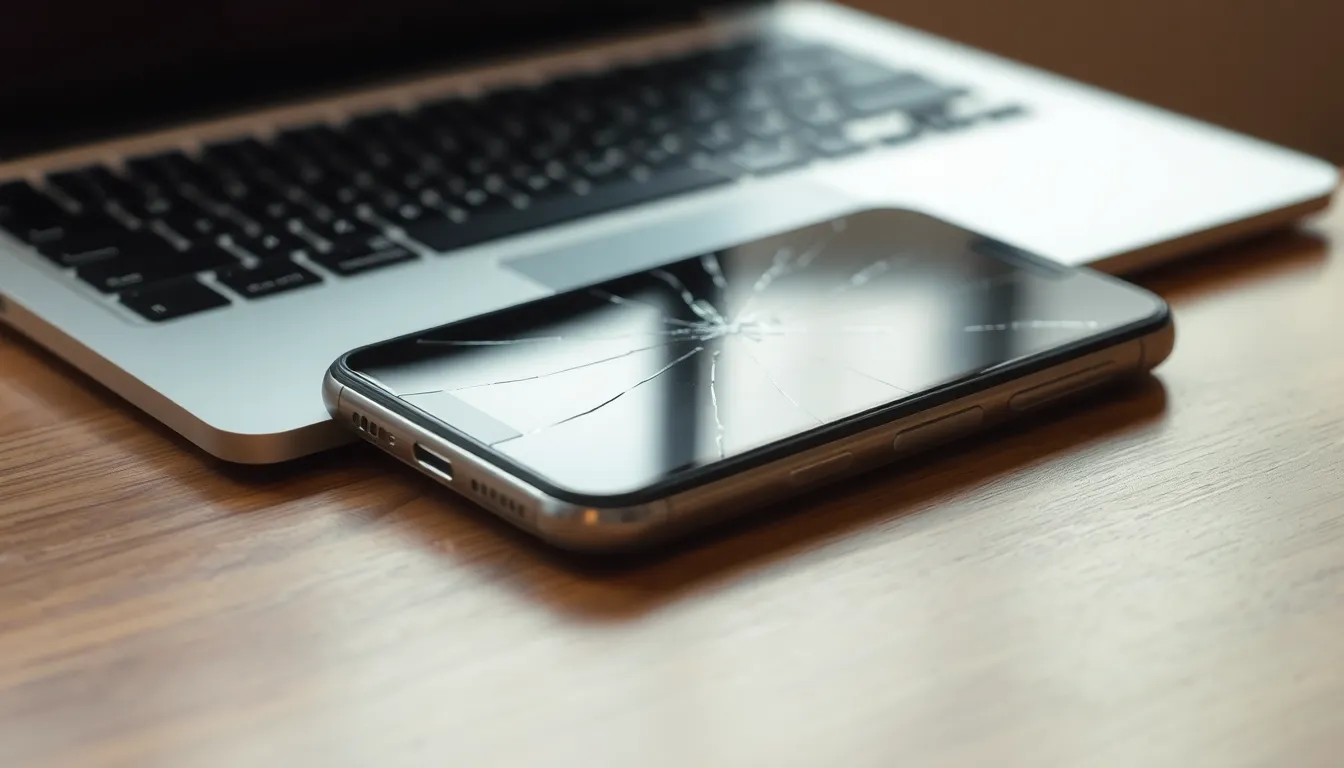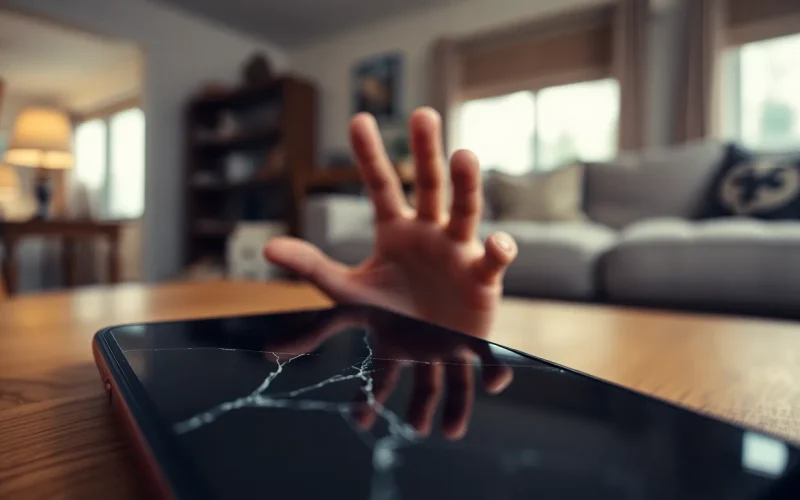Table of Contents
ToggleIn a world where gadgets are practically an extension of ourselves, it’s hard to ignore the tragic fate of our beloved devices when they suffer injuries. From cracked screens to waterlogged circuits, these technological companions endure more than their fair share of accidents. It’s like they’ve taken a tumble down the stairs of life, and now they’re limping along, begging for a second chance.
Overview of Injured Gadgets
Injured gadgets often experience significant physical and performance-related damages, impacting their functionality. Cracked screens lead the list of common injuries; they hinder visibility and can worsen over time. Water damage also poses a serious threat, as moisture can compromise internal components and lead to total failure. Battery issues frequently arise after an impact, decreasing lifespan and causing devices to shut down unexpectedly.
Damage impacts various gadgets, including smartphones, laptops, tablets, and smartwatches. Smartphones with deep scratches or shattered displays require repair to restore usability. Laptops suffering from liquid spills may need extensive servicing, often involving complete disassembly. Tablets exhibit similar vulnerabilities, with broken glass inhibiting touch sensitivity.
Addressing these injuries involves cost considerations and time investment. Many users opt for professional repairs, while others choose DIY methods. Although warranty coverage can alleviate financial burdens, it often excludes accidental damage. Users frequently explore insurance options for added protection against future incidents.
Emotional connections to gadgets strengthen the desire for repair and recovery. Each scratch or dent tells a story, reminding users of memorable experiences. Seeking to restore functionality becomes a priority, especially when devices serve as essential tools for work or communication. Despite their injuries, many gadgets can regain functionality through timely interventions.
Injured gadgets vary in type and severity of damage. Repair efforts aim to restore these devices, allowing users to reclaim their investments and preserve their memories. Users generally maintain hope for gadgets, viewing them as extensions of their daily lives rather than mere objects.
Common Types of Injured Gadgets

Gadgets endure various types of damage that hinder their functionality. Understanding these common injuries helps users navigate repair options effectively.
Smartphones and Tablets
Smartphones and tablets top the list of injured gadgets. Cracked screens significantly impact visibility, making interactions frustrating. Water damage poses another major threat, potentially causing irreversible harm to internal circuits. Battery issues frequently arise from drops, leading to shorter usage times. Users often face decisions between professional repairs and DIY fixes for these popular devices.
Laptops and Desktops
Laptops and desktops experience injuries that can disrupt daily tasks. Common issues include cracked screens, malfunctioning keyboards, and overheating from internal damage. Accidental spills can also lead to substantial water damage, jeopardizing sensitive components. Performance problems often stem from hard drive failures, which decrease overall efficiency. Repairing laptops usually involves considering both cost and time, as components may vary significantly in price.
Wearable Technology
Wearable technology, such as smartwatches and fitness trackers, faces unique challenges. Scratched screens reduce display clarity, while water damage affects functionality, especially in devices designed for exercise. Battery life often diminishes after impact, resulting in frequent charging needs. Repairability varies widely, as some models come with limited options. Users frequently weigh the emotional connection to these gadgets against the practicality of replacement.
Causes of Gadget Injuries
Various factors contribute to gadget injuries, including physical damage, software issues, and environmental factors. Understanding these causes can help users mitigate risks and extend the lifespan of their devices.
Physical Damage
Physical damage accounts for a major percentage of gadget injuries. Impacts from falls result in cracked screens and dented bodies, significantly affecting usability. User handling often leads to these accidents, highlighting the importance of protective cases. Furthermore, liquid exposure leads to corrosion of internal components, which may halt device functionality entirely. Cracked screens impede visibility and usability, forcing many users to consider their repair options seriously. Without timely attention, such injuries could worsen and necessitate complete replacements.
Software Issues
Software issues frequently arise alongside physical damage, creating additional complications. System freezes and crashes can frustrate users and degrade performance. Viruses or malware may infiltrate gadgets, making devices slow or unresponsive. Updates often contain critical fixes that prevent software problems, yet many users neglect them. Outdated operating systems increase vulnerability to software errors and security risks. Regular maintenance helps minimize these issues, ensuring devices run smoothly. Users who understand these risks can take proactive steps to maintain their gadgets effectively.
Environmental Factors
Environmental factors play a significant role in gadget injuries as well. Extreme temperatures can adversely affect gadget performance and battery life. For instance, exposure to excessive heat can lead to overheating while cold temperatures may limit battery efficiency. Moisture in the air often contributes to corrosion, damaging internal components over time. Users frequently overlook these environmental impacts, yet they can easily lead to long-term issues. Additionally, dust particles can clog ports and openings, leading to malfunction. Being mindful of these factors can help protect gadgets from environmental harm.
Repair and Restoration Options
Repairing injured gadgets can take various approaches, including DIY fixes and professional services. Each option has unique benefits and considerations to weigh.
DIY Fixes
Many users embrace DIY fixes for straightforward injuries like cracked screens and battery issues. Various instructional videos and guides exist online, simplifying the repair process. For example, screen replacements for smartphones and tablets often require minimal tools and can save significant costs. Moreover, battery replacements for devices like laptops are frequently manageable with basic knowledge. Users who are comfortable navigating their gadgets may find DIY helpful, while others might prefer caution due to risks of further damage.
Professional Repair Services
Professional repair services cater to complex issues that require expertise and specialized tools. Many users seek these services for significant damage like water immersion or internal component failures. Certified technicians provide assessments and often back their work with warranties, ensuring peace of mind. Local repair shops and manufacturer service centers offer options tailored to various gadgets, from smartphones to laptops. Users can expect longer turnaround times and higher costs, but they access quality repairs and reliability.
Preventative Measures for Gadget Care
Regular maintenance keeps gadgets in optimal condition. Users can protect screens with tempered glass coverings, significantly reducing the risk of cracks from falls. Utilizing waterproof cases can prevent damage from spills or accidents. Storing devices in padded bags offers an additional layer of protection, minimizing harm during travel.
Careful handling during use can extend gadget lifespan. Keeping gadgets away from extreme temperatures prevents internal component failure. Avoiding cluttered workspaces decreases the chances of accidental drops. Charging devices on stable surfaces eliminates risks associated with tangled cords.
Software updates enhance performance and security. Regularly updating operating systems reduces the likelihood of software-related issues. Installing security applications also helps shield gadgets from malware threats. Backing up data frequently ensures that important information remains safe despite physical damage.
Educating users about gadget care fosters better habits. Reading user manuals guides proper handling and maintenance practices. Attend workshops or seminars on the latest gadget care techniques for additional knowledge. Following online forums can provide valuable tips from other users who share similar experiences.
Planning storage environments can protect gadgets from environmental stressors. Keeping gadgets away from moisture-rich areas prevents corrosion of internal components. Ensuring proper ventilation helps avoid overheating during prolonged use. Adopting such practices can significantly extend the usable life of electronic devices.
Injured gadgets tell a story of resilience and attachment. While physical damage can hinder performance and usability, timely repairs can breathe new life into these devices. Users often face tough decisions when weighing the emotional value of their gadgets against repair costs and time.
Preventative measures play a crucial role in extending gadget lifespans. By adopting good habits and being mindful of their devices’ surroundings, users can significantly reduce the risk of injuries. With the right approach, many gadgets can continue to serve their purpose, preserving memories and functionality for years to come.





